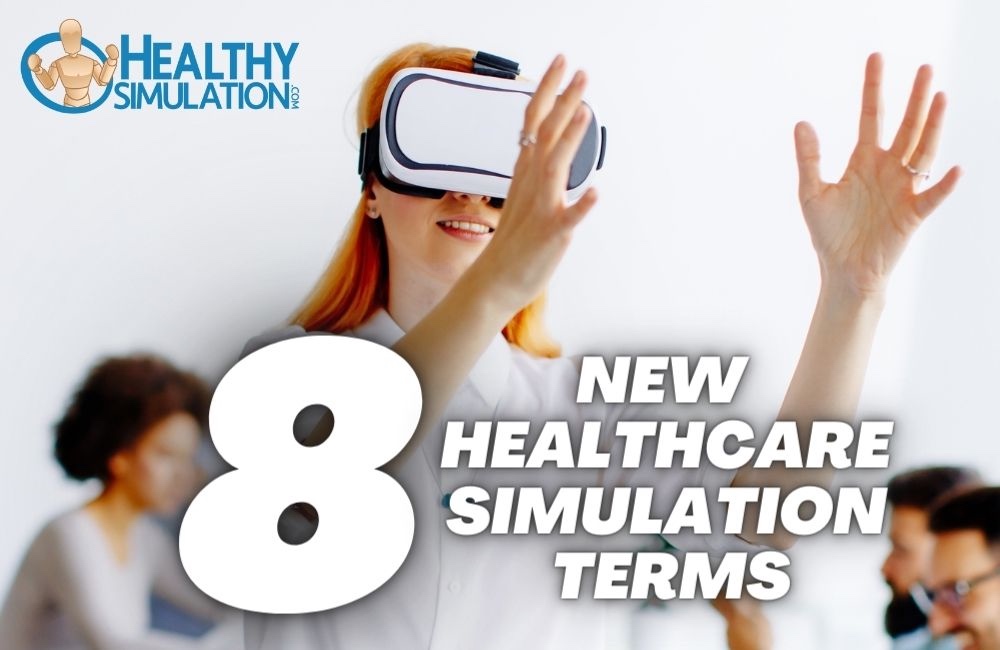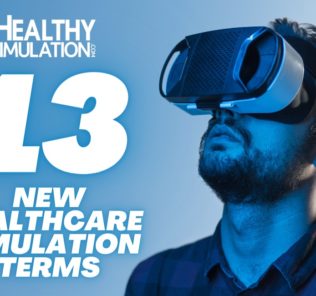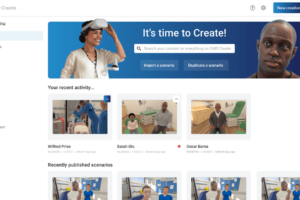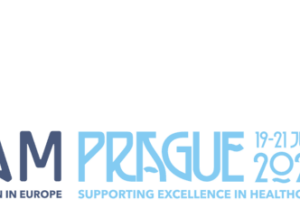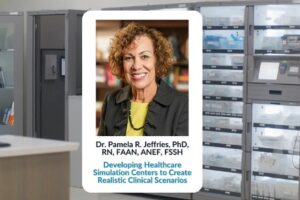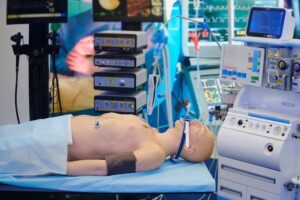8 Medical Simulation Keywords You Need to Know About
Continuing HealthySimulation.com’s coverage of Medical Simulation companies and keywords you need to know about, today we cover eight more healthcare simulation vendors and terms that are providing high-quality, in-demand insights and learning tools in the domain of clinical simulation! These simulations in healthcare vendors and keywords are important to know more about as they may offer unique perspectives, practices, products and services which can perfectly fit your simulation center or learners’ needs! Here are eight Medical Simulation companies and keywords you need to know about, with additional links below for even more important terms!
Echo Healthcare is a dynamic medical simulation company focused on improving patient safety through the use of advanced simulation technology. With over 20 years of industry experience, the company is committed to redefining innovation and service by offering tailored solutions to customers. Echo Healthcare represents select, innovative products and services in the field of clinical simulation and education that bring a new level of realism to scenario-based medical education, including realistic patient manikins, patient masks, simulated patient monitors, simulated virtual environments, simulation technical support services and more.
Sponsored Content:
Echo Healthcare was founded by a group of passionate healthcare simulation experts who bring over 40 years of experience into the marketplace. Together, this team has created a “circle of innovation” by bringing diverse product lines that complement one another and can grow as your programs expand. The company believes programs should be built around a client’s needs and not be restricted by the limitations of a clinical simulator. Thus, Echo Healthcare provides solutions that can be tailored to clients’ educational needs.
A Nursing Simulation Scenario is a clinical simulation event that replicates a nursing practice or situation. A nursing simulation scenario incorporates high-fidelity or mid-fidelity manikins, standardized participants (SPs), role-playing, skills stations, and critical thinking skills. The purpose of these scenarios in nursing education is to provide skills practice and real-life situations in a safe environment. The benefits of using nursing simulation scenarios in healthcare education are numerous. Common scenarios and available resources can help health simulation centers and their learners succeed.
Clinical simulation training is becoming more common for a variety of reasons. The number of undergraduate nursing programs has increased, leading to more competition for clinical placements. In acute care settings, there have been restrictions on the number of students or curtailment of clinical activities that student nurses are allowed to perform. However, simulation training transforms nursing education from conceptual to contextual, which is a benefit in the long run.
Sponsored Content:
iRIS Health Solutions is a United Kingdom-based software company that provides an innovative and engaging web-based healthcare simulation scenario authoring platform to organizations worldwide. The technology helps clinical simulation educators to easily design, develop and manage high-quality training simulation scenarios in collaboration with peers and subject matter experts by using a step-by-step wizard. Best of all, the solution allows users to export scenarios straight to manikins and other technologies from most leading simulation vendors. This includes Laerdal, CAE, UbiSim and now iSimulate.
Used by over 2,000 healthcare simulation authors around the world, iRIS is hosted online, and requires only a browser for access, so it has a minimal IT footprint and is easy to deploy for simulation teams and faculty. When working in iRIS’s step-by-step wizard, educators seamlessly incorporate best practice frameworks (INACSL, ASPE, PEARLS Healthcare Debriefing Tool, etc.) across the full spectrum of simulation programs — full-body Manikins and Patient Simulators, Standardized Patients and Task Trainers. It is an ideal solution for educational institutions, simulation centers, simulation networks and simulation membership organizations.
Dental Simulation is the use of simulation education for dentistry procedures. Clinical simulation in dental education is hardly a new phenomenon — the first “phantom head” was in use by the late 19th century. However, the simulation models have evolved continuously since then, and at this time, three-dimensional virtual reality (VR) software is becoming an educational standard. Pre-patient simulation training helps dental students transition smoothly to patient clinics. A number of simulation education tools and methodologies are available in dental schools.
Dental education is extremely comprehensive, incorporating more than just oral health. Dental students are also educated in pharmacology, anatomy, human biology, and general health. Dental skill trainers address the need for preclinical education, concerns for patient safety, and provide the most appropriate learning setting for novice dental students. In addition to dental simulators that let learners practice skills necessary for the safe delivery of patient care, dental simulation may also encompass the skills needed to create and manage a successful dental practice.
HealthStream is an information technology and services company that is dedicated to improving patient outcomes through the development of healthcare organizations’ greatest asset: their people. The company’s unified suite of solutions is contracted by approximately 4.8 million healthcare employees in the U.S. for workforce development, training and learning management, talent management, credentialing, privileging, provider enrollment, performance assessment and managing healthcare simulation-based education programs.
These solutions help develop and empower people to deliver the highest quality of care. The company understands clients’ need to maximize resources in an increasingly complex healthcare environment. HealthStream has worked side-by-side with 4,000+ healthcare organizations for over 30 years to cultivate a more competent and engaged workforce. Founded in 1990, the company is based in Nashville, Tennessee. HealthStream has additional offices in Brentwood, Tennessee; Jericho, New York; Boulder, Colorado; San Diego, California; and Chicago, Illinois.
A childbirth simulator, or labor and delivery simulator, is a healthcare simulation manikin or skills task trainer used in medical education to help learners practice the process of obstetric care from prenatal assessment through labor and delivery. A childbirth simulator can be a torso-based task trainer, or a mid- to high-fidelity full-body labor manikin with a simulated uterus, fetus, and placenta. Research demonstrates that using labor simulation in clinical obstetrics training improves patient outcomes and safety.
Clinical simulation training improves patient management skills associated with normal maternal interventions, such as vaginal delivery, as well as obstetrical emergencies, including shoulder dystocia (when the baby’s shoulder becomes stuck behind the mother’s pubic bone), eclampsia (maternal high blood pressure), and maternal hemorrhage. Labor and delivery scenarios are often interprofessional, as many healthcare departments can be a part of labor and delivery, including emergency rooms, midwives, labor and delivery nurses, obstetricians, and pediatric departments.
Veterinary Simulation is simulation training for veterinary technicians, nurses and doctors. Veterinary simulation helps learners become familiar with the unique healthcare needs of animals, primarily animal companions (pets such as cats, dogs and rabbits) and farm animals (horses, cows and pigs). Veterinary simulation models allow learners to gain knowledgeable experience without causing harm to live animals.
As with most simulation education, the purpose of veterinary simulation is to develop and hone specific clinical and psychomotor skill sets. For animals, those skill sets can range from the routine and simple — such as giving injections, starting IVs and suturing — to more complex or rare events. Healthcare simulation scenarios for veterinary students depend on the types of animals a vet practice will see, and that can range from the usual animal companions to avian and reptile companions, farm animals and animal husbandry, and even wildlife.
An eye simulator is a computer simulator that is used across healthcare simulation to educate optometrists and ophthalmologists to assess, diagnose and manage vision changes and eye care. Eye simulators combine computers, external or internal images of the eye, and a simulated ophthalmoscope. They can enhance education for optometrists and ophthalmologists by teaching them to recognize common eye problems. Instructors can provide guidance and feedback in real-time, which also enhances education.
Virtual patient simulators for ophthalmology have been well-tolerated by learners and have been validated for the assessment of clinical competencies for surgical certification. Eye simulators are different from eye models, which are three-dimensional models used to study the anatomy of the eye. Eye models are enlarged to show the parts of the eye, and usually come apart to display external and internal structures.
Learning to properly use an ophthalmoscope benefits several healthcare disciplines, including nurse practitioners, physicians, physician assistants, optometrists and ophthalmologists. However, the latter two disciplines in particular benefit from the adoption and use of eye simulators with advanced technology.
Other Articles Covering Important Key Terms in the Medical Simulation Industry:
- 11 Medical Simulation Keywords You Need to Know About
- 10 Medical Simulation Keywords You Need to Know About
- 15 Medical Simulation Companies You Need to Know About
- 10 More Healthcare Simulation Companies You Must Know About
- 14 Important Medical Simulation Companies to Know
- 15 Must Know Healthcare Simulation Terms For 2020
- 7 More Healthcare Simulation Terms You Don’t Know!
- 12 More ‘Must-Know’ Healthcare Simulation Key Terms
- 11 More Key Terms to Help Your Healthcare Simulation Program Develop Faster
- 7 More Must Know Clinical Simulation Key Terms
- 11 Key Terms to Help Colleagues Learn About Healthcare Simulation
Lindsey Nolen is the Content Director for HealthySimulation.com. She is an award-winning journalist with years of experience writing about the many different facets of healthcare, including clinical simulation education and training. She also helped create content for the healthcare career information website, CareersinHealthcare.com.
Sponsored Content:



